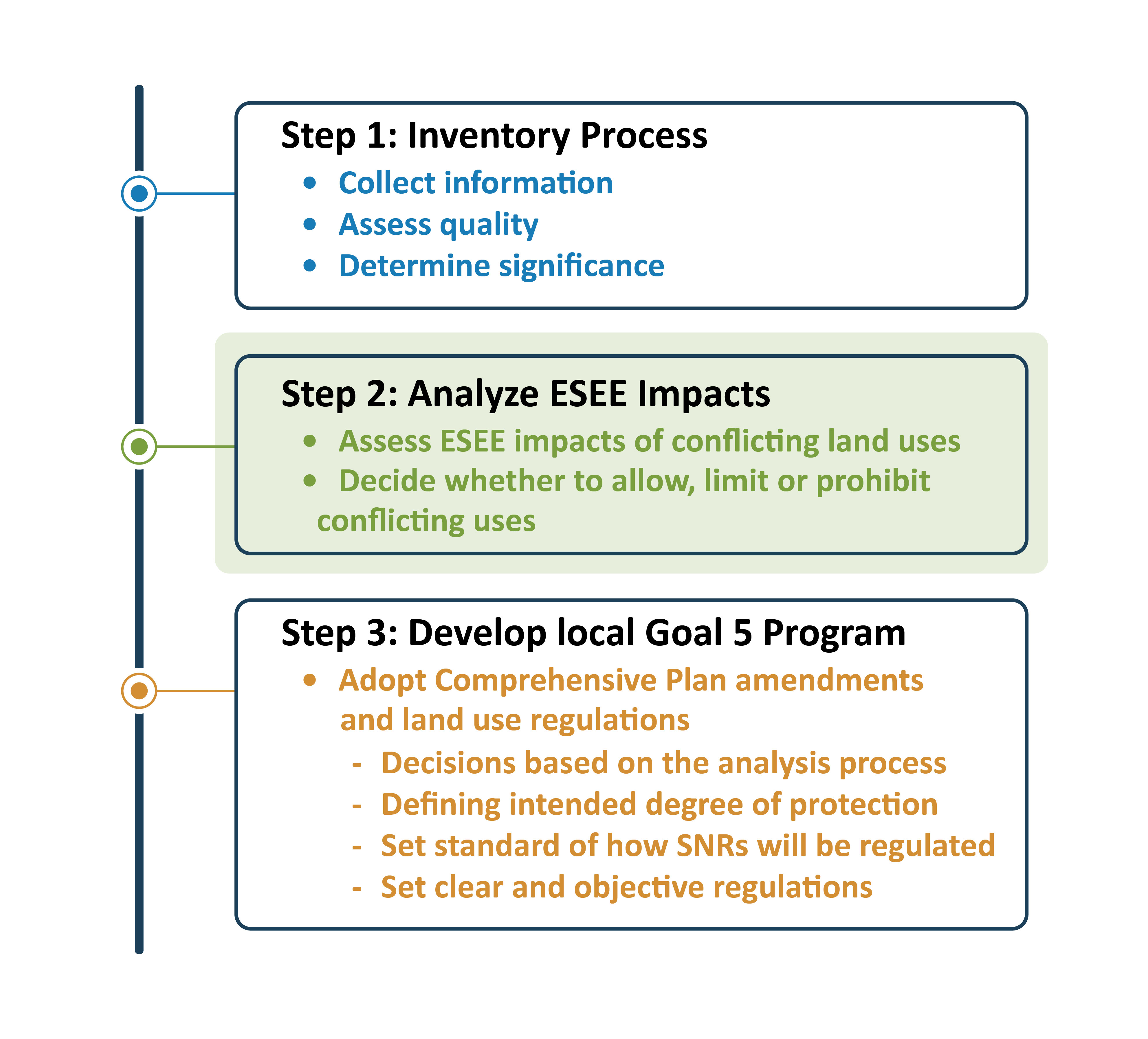
After the Inventory is complete, the next step is an Economic, Social, Environmental and Energy (ESEE) Analysis.
The ESEE analysis is an analysis of the economic, social, environmental and energy consequences of allowing, limiting or prohibiting “conflicting uses.” An ESEE analysis is used to help balance different community values and helps to show how different levels of natural resource protections can lead to different outcomes.
An ESEE analysis should:
Conflicting uses are activities that could impact or hurt a natural resource area.
Examples include:
Conflicting uses sometimes provide benefits, like new housing and jobs. There are trade-offs to consider when writing new rules. The ESEE analysis helps us think about those trade-offs when answering this question: Should the new rules allow, limit or prohibit some or all conflicting uses in natural resource areas?
The ESEE analysis considers all angles. For example: